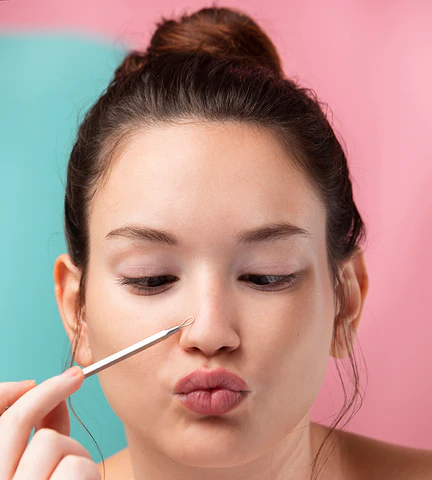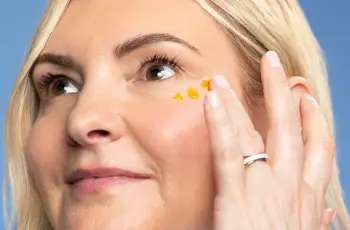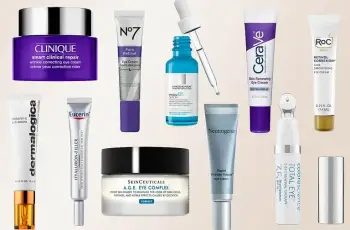
Can Peptides and Retinol Be Applied Together?
It’s easy to think of skin care as a simple task when you don’t know what exactly it is. If you’re new to beauty, the idea of layering skin care products can be quite intimidating, especially when they have unusual names like
There are peptides and retinol.
But don’t panic, everything will become clearer after today’s blog post, so let’s dive into how to layer peptides and retinol.
Before we get started, here’s a quick summary of the skin care benefits of peptides and retinol and what you can expect.
What are the benefits of peptides for skin care?
Reduce the appearance of fine lines and wrinkles. Helps strengthen the skin barrier. Provides anti-inflammatory properties to the skin. Helps the skin feel and look firmer. Increases collagen production
Repairs damage to the skin barrier. What are the benefits of retinol for skin care? Fights signs of aging like fine lines and wrinkles. Brightens the complexion for a radiant look
Regulates oily skin types. Reduces the frequency of breakouts and acne. Lightens dark spots and hyperpigmentation. Can peptides and retinol be used together? Yes, it is actually possible. Using peptides and retinol together requires some time and consideration due to the high potency of both ingredients.
Many skin experts believe that while peptides are very effective for the skin, they tend to penetrate too deeply into the underlying layers. This helps many people with oily or combination skin, but can cause skin irritation and severe dryness in dry or sensitive skin.
If you are unsure whether to use peptides and retinol together, you can use the two ingredients interchangeably. Ideally, you should use retinol as part of your evening routine, as UV radiation renders the powerful vitamin A useless and ineffective.
If you want to learn more about using peptides and retinol together, read our dedicated blog post. What belongs first, peptide or retinol? If you choose to layer peptides and retinol, you will get the best results with the retinol applied first.
This means that your skin can benefit from the many benefits of retinol as well as the care of the peptide. This can counteract over-drying of the skin and keep the protective barrier fully functioning.
If using the two ingredients separately, it is best to use the peptide in the morning and the retinol in the evening. It’s not just because retinol needs to be applied overnight, but because our skin has a daily circadian rhythm, meaning its needs change every 24 hours between morning and evening.
In the morning, your skin needs help protecting itself from UV rays, pollution, and other free radicals, while at night, you need help repairing existing damage.
Can I use peptides in the morning and retinol at night?
By using peptides in the morning and retinol at night, you can absolutely ensure that your skin is getting the most out of these powerful substances.
Even if you’ve built up a tolerance to the benefits of retinol, you could still be inadvertently irritating your skin. By applying peptides in the morning, you’re nourishing your skin while ensuring that the peptides are boosting collagen production. You can then repair damage caused by daily exposure to free radicals.
If I may add, retinol increases your skin’s sensitivity to light. So wear an SPF 30+ sunscreen every day, even on cloudy and rainy days.
Are peptides good for wrinkles?
Yes, peptides are very effective for reducing wrinkles. Peptides are short chains of amino acids that form the building blocks of collagen and elastin in the lower layers of the skin.
Are peptides good for wrinkles?
Yes, peptides are very effective for reducing wrinkles. Peptides are short chains of amino acids that form the building blocks of collagen and elastin in the lower layers of the skin.
When applied topically to the skin in a serum or moisturizing formula, peptides act as messengers, stimulating collagen compounds to produce more collagen. As a result, skin looks and feels firmer, retaining youthful elasticity and a healthy complexion.
What can peptides be combined with?
While peptides are generally considered very effective and well tolerated with other skin ingredients, it is best to avoid using vitamin C with peptides.
Vitamin C is a powerful antioxidant with a variety of benefits: from reducing hyperpigmentation and dark spots to fighting fine lines and wrinkles. The problem with mixing peptides is that they counteract each other, making them useless for the skin and often causing irritation and dryness in some cases.
Can serums be applied over retinol?
Yes and no, as the consistency of the retinol-rich product plays a role. As a general skin rule, skincare is best applied from thinnest to thickest layers.
Because serums typically have a lightweight, watery or gel-like consistency, they absorb quickly into the skin, allowing you to apply thicker moisturizers and oils. That’s it. Retinol formulas can be found in serums, oils, and moisturizers that you apply as the last step in your routine. If you want my opinion, I recommend two serums, one with retinol and one with hyaluronic acid. That way you avoid severe dryness or irritation while still benefiting from retinol’s skin-renewing properties.


